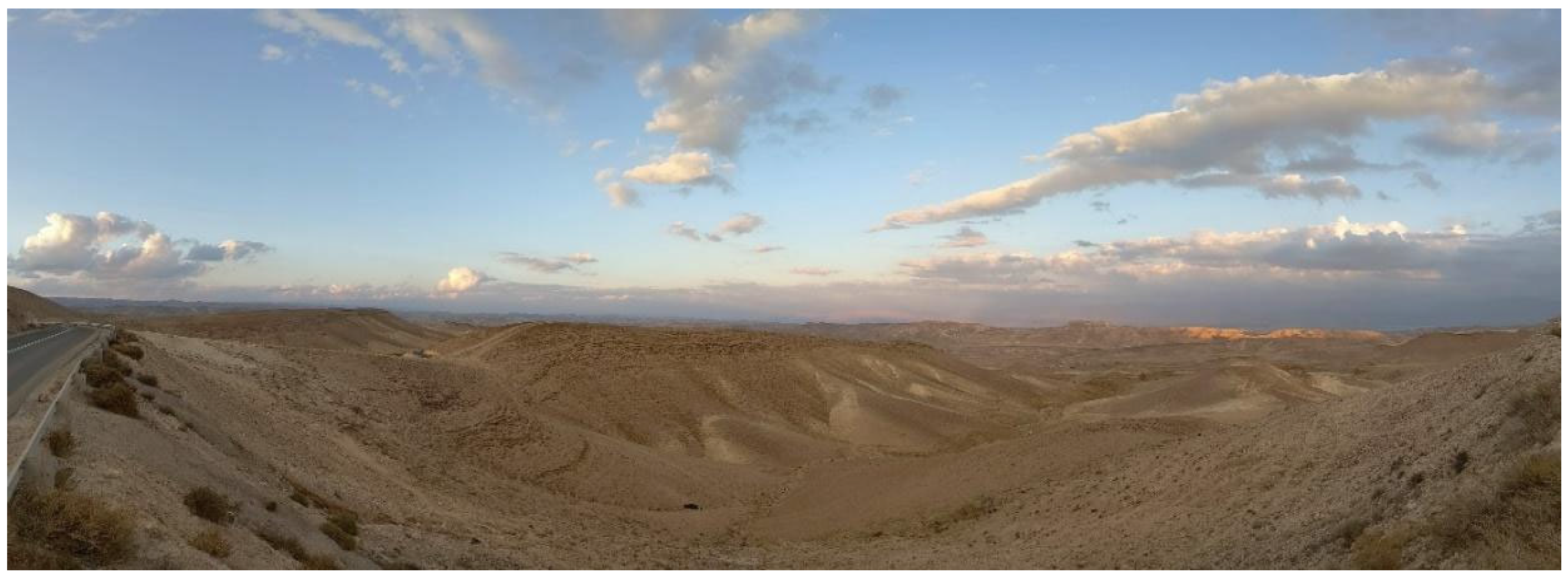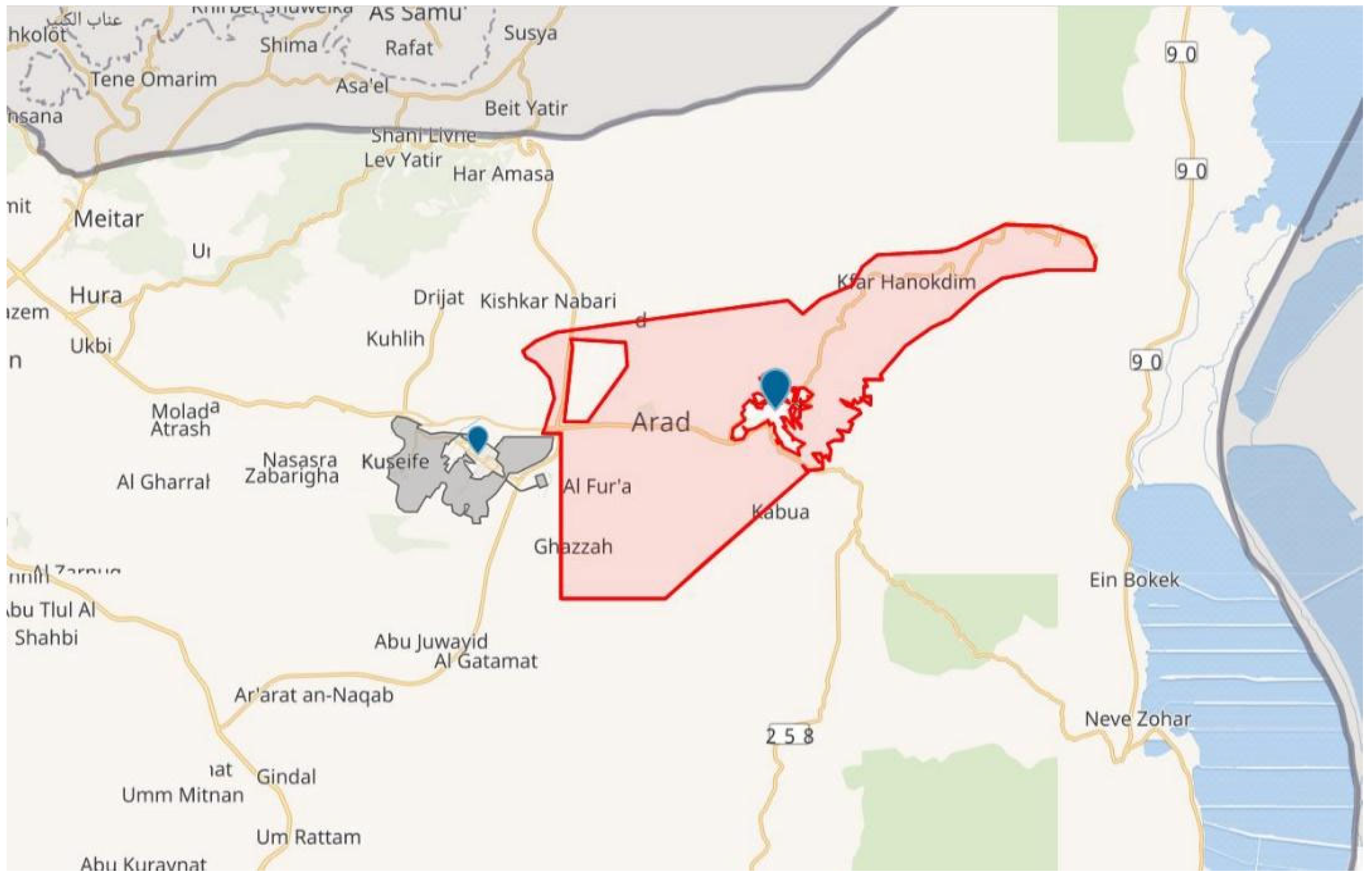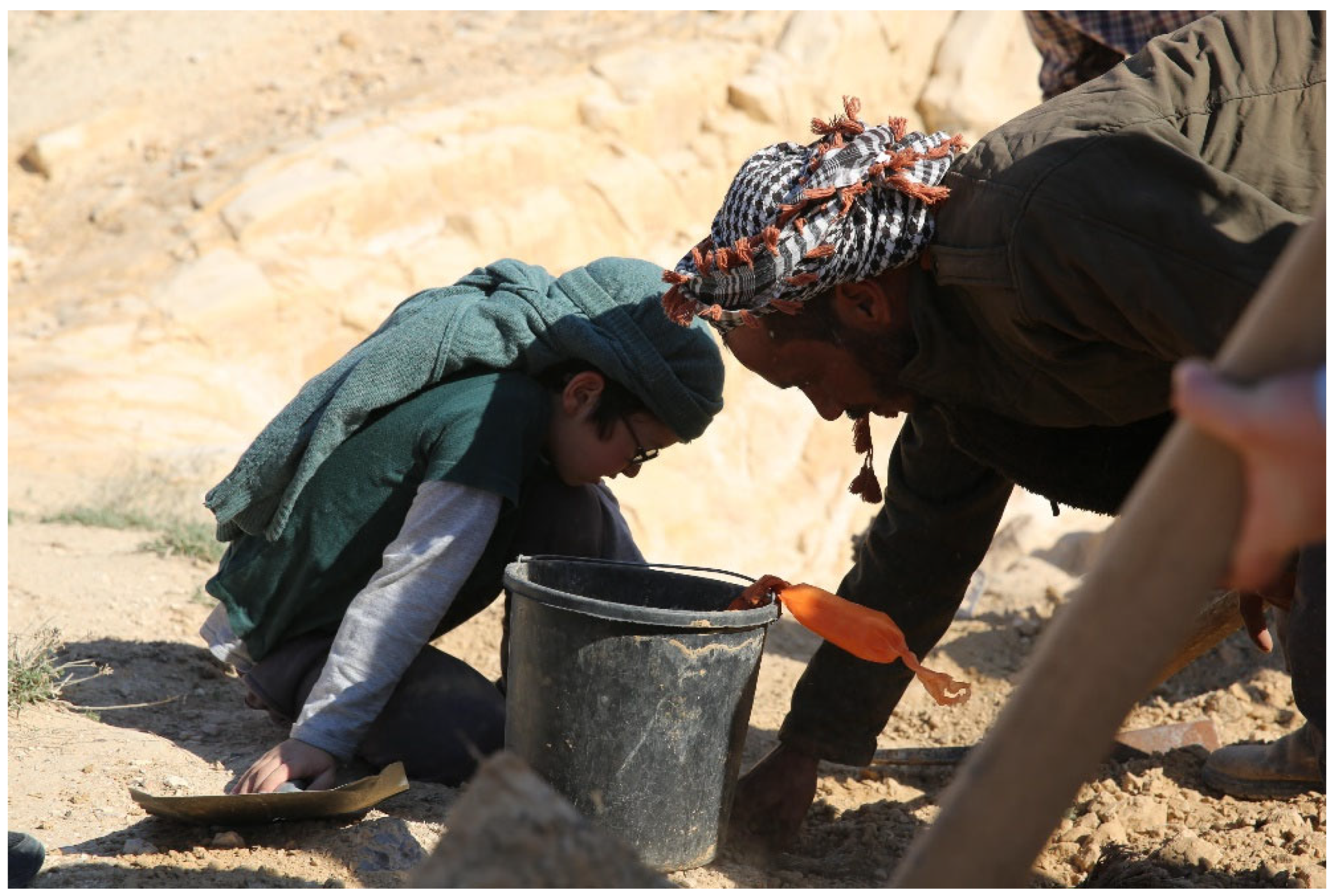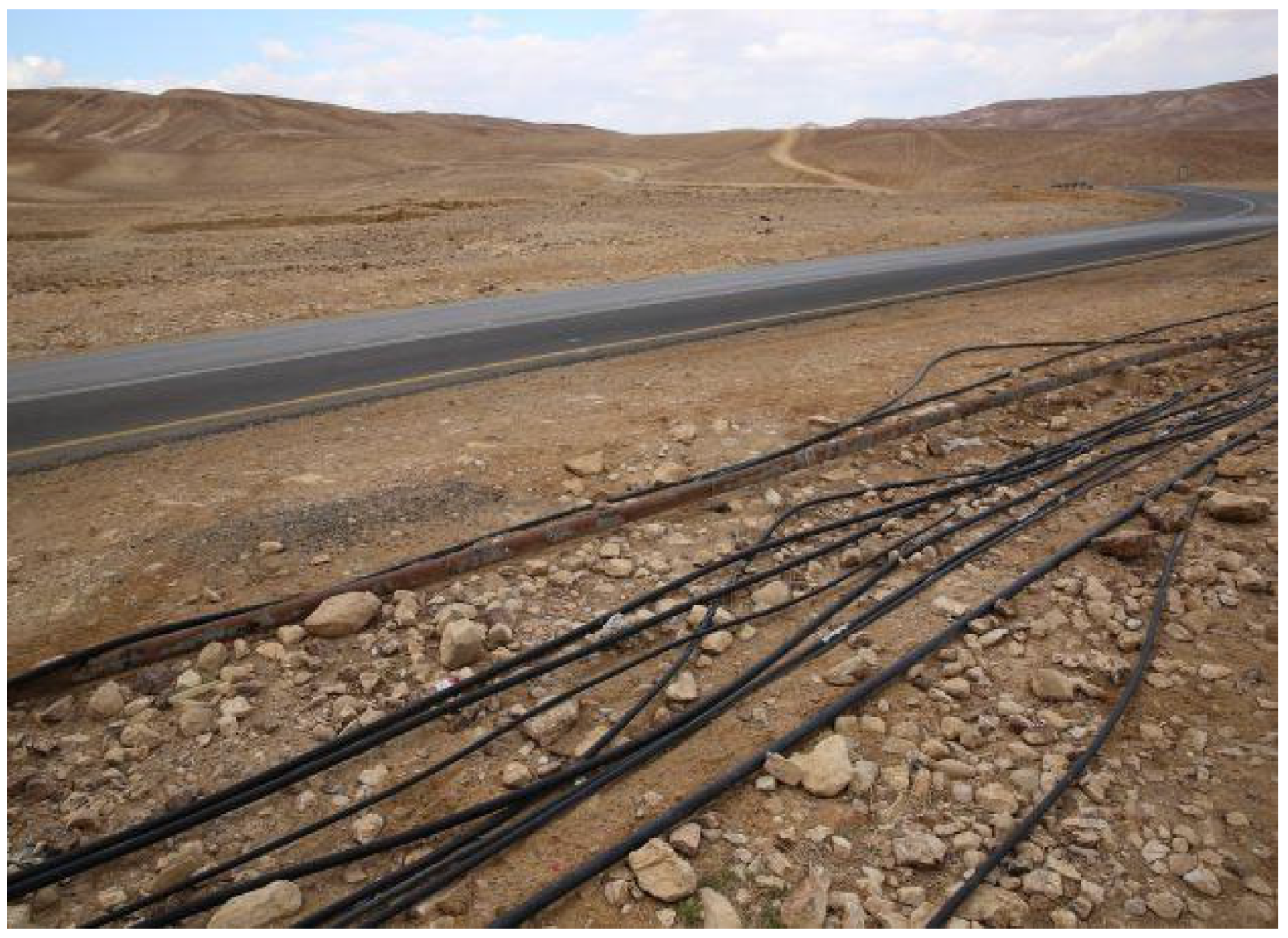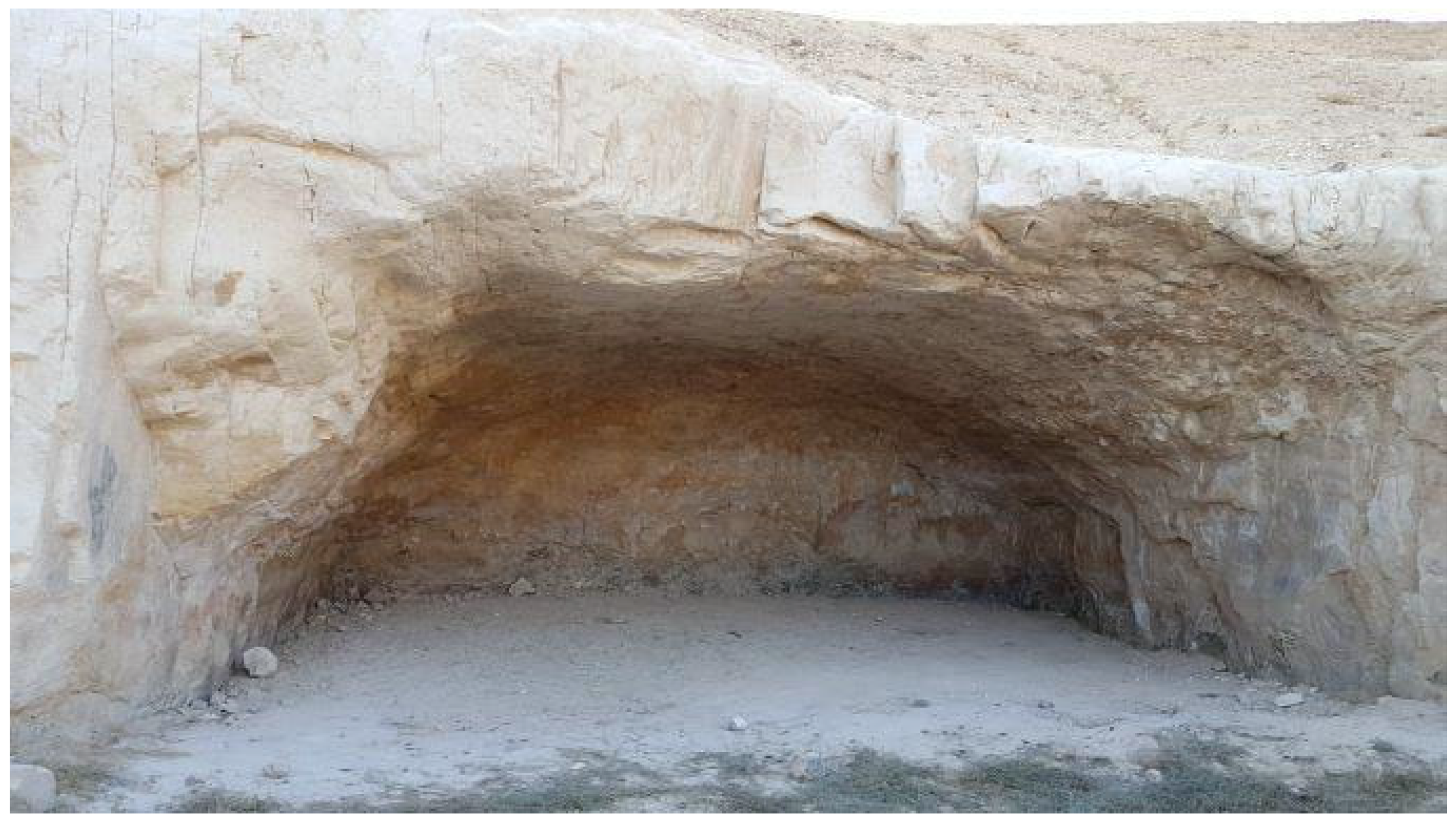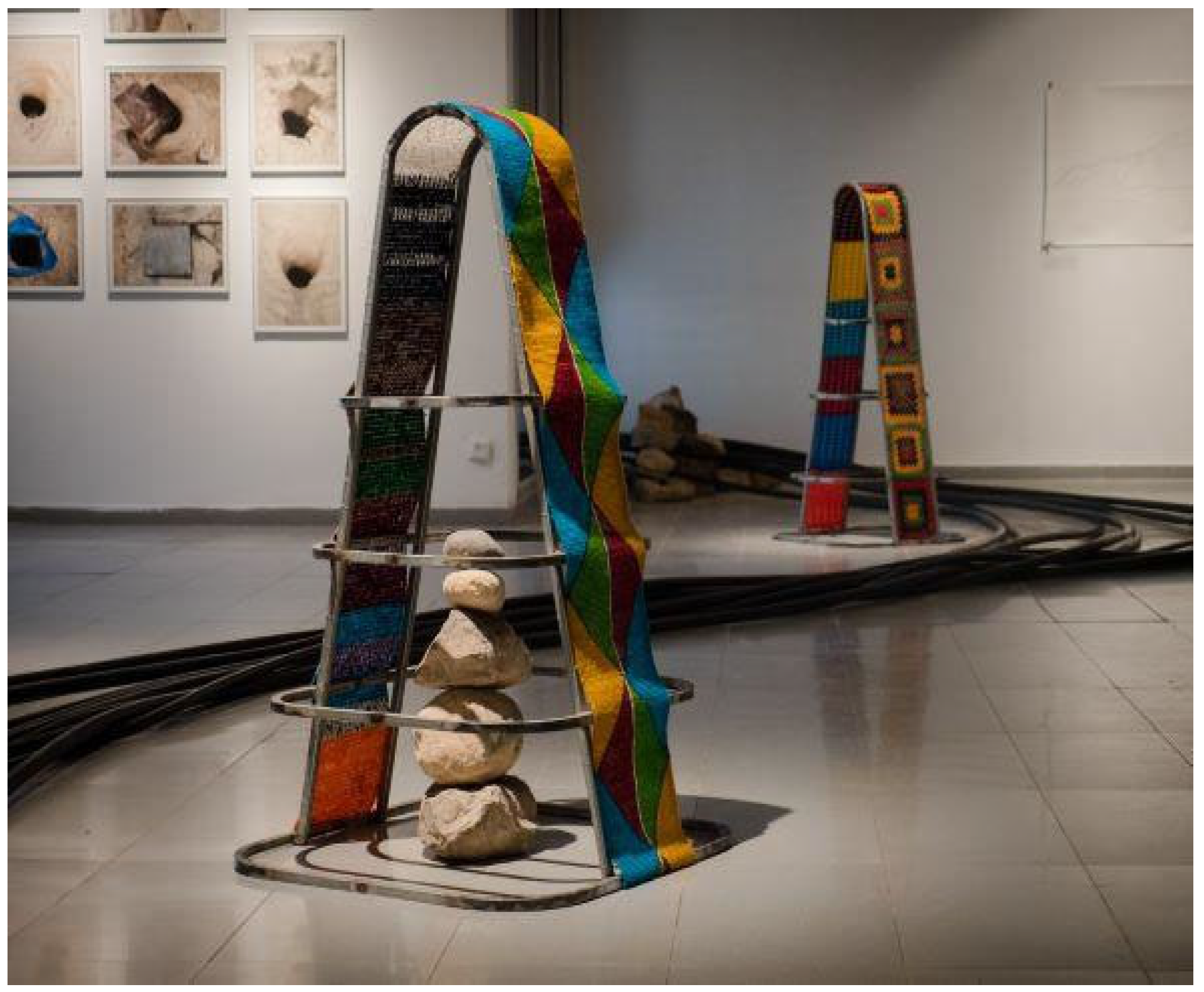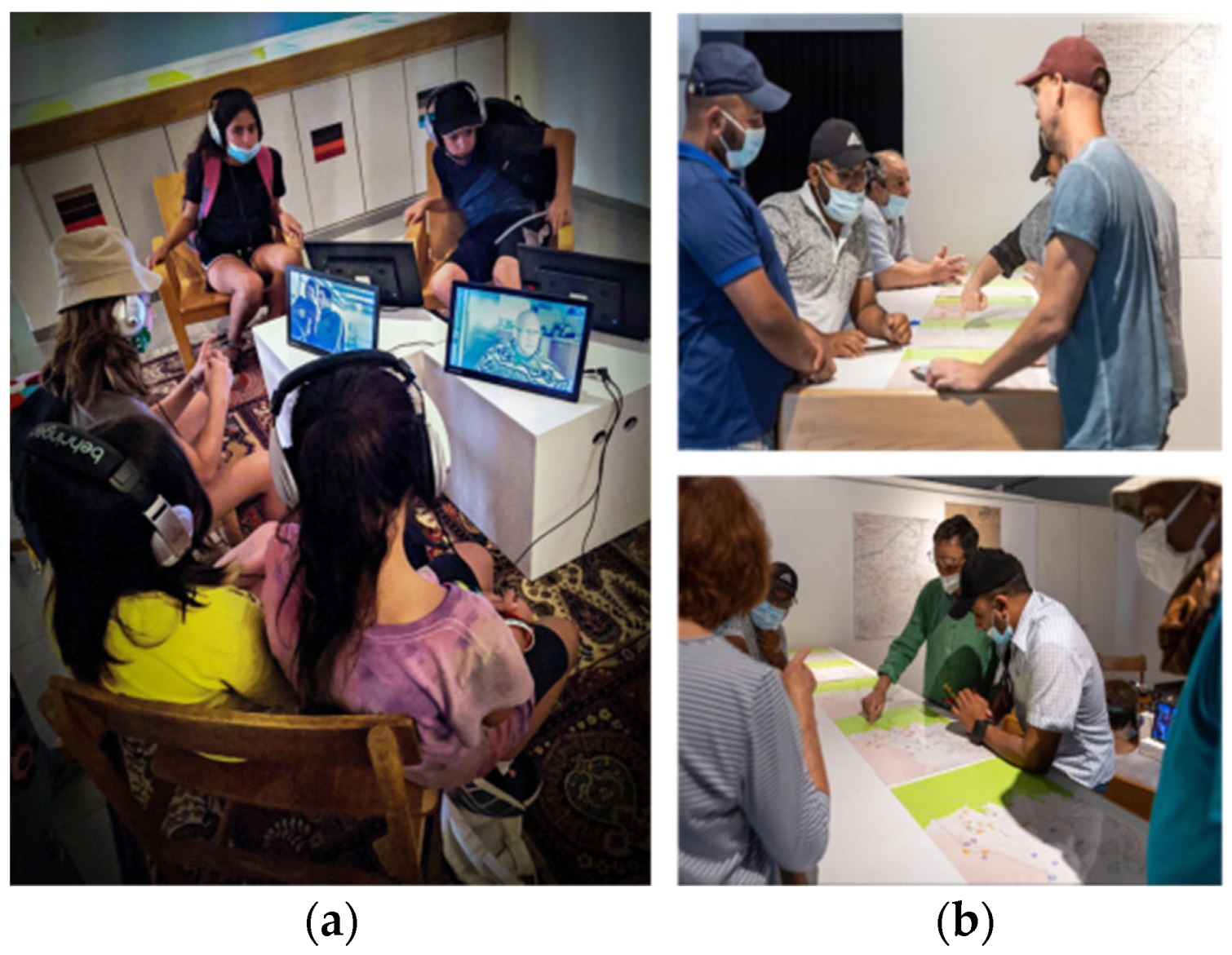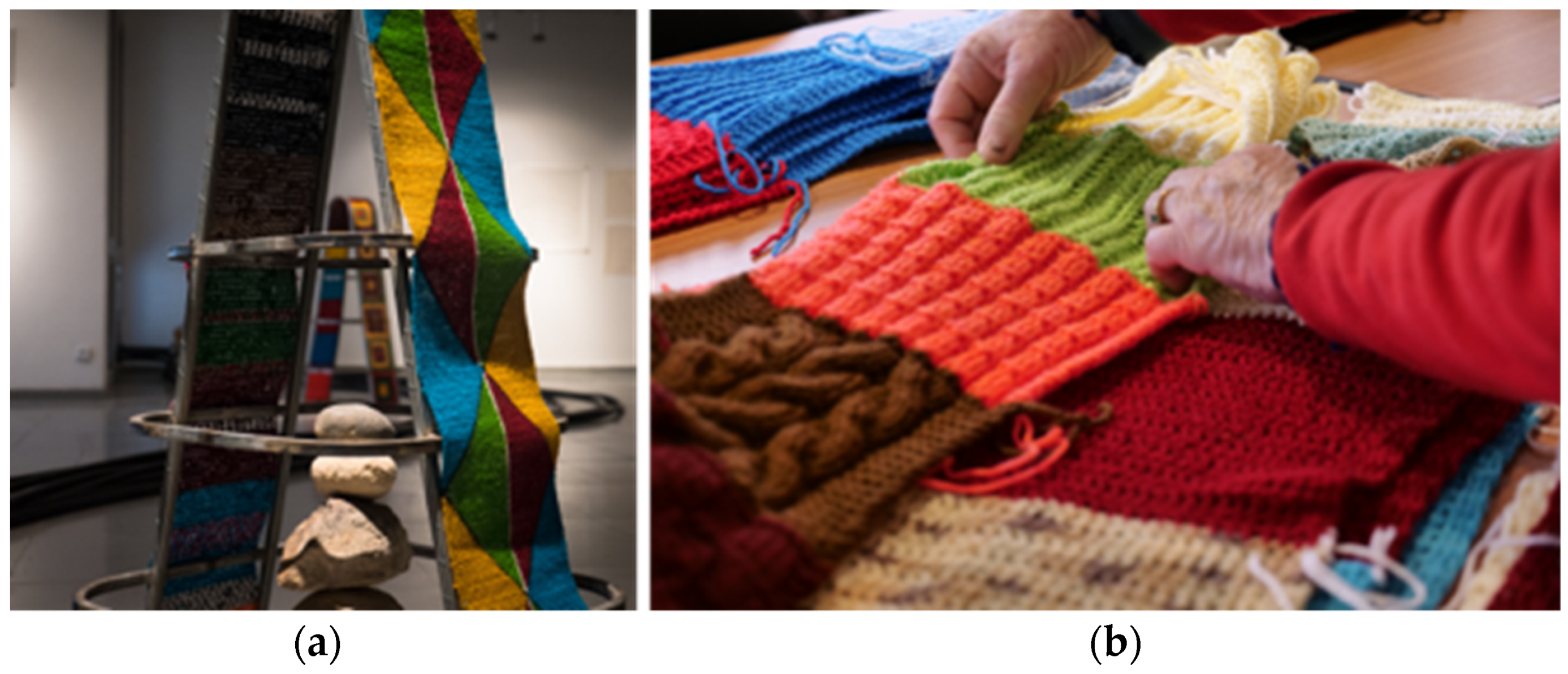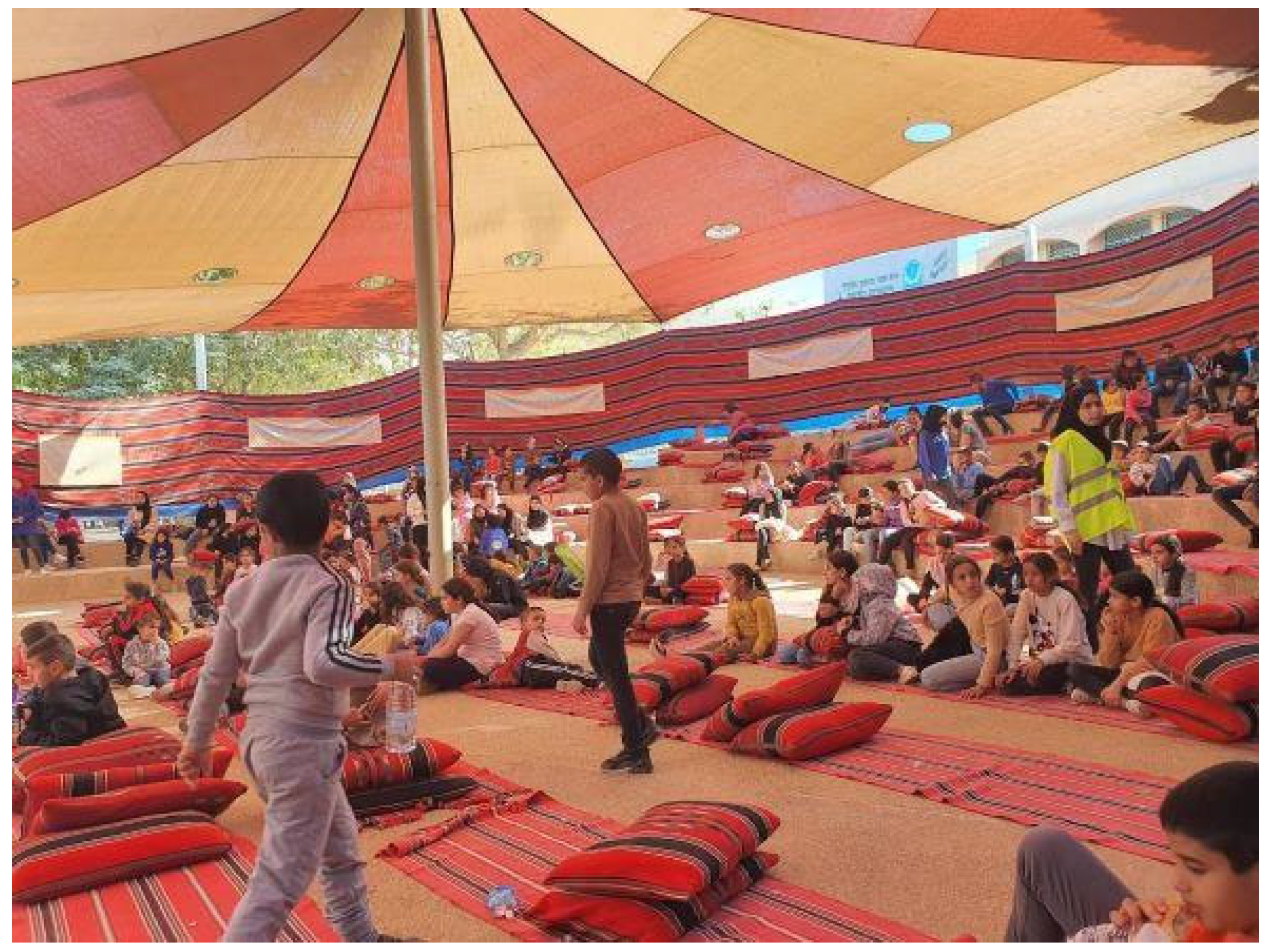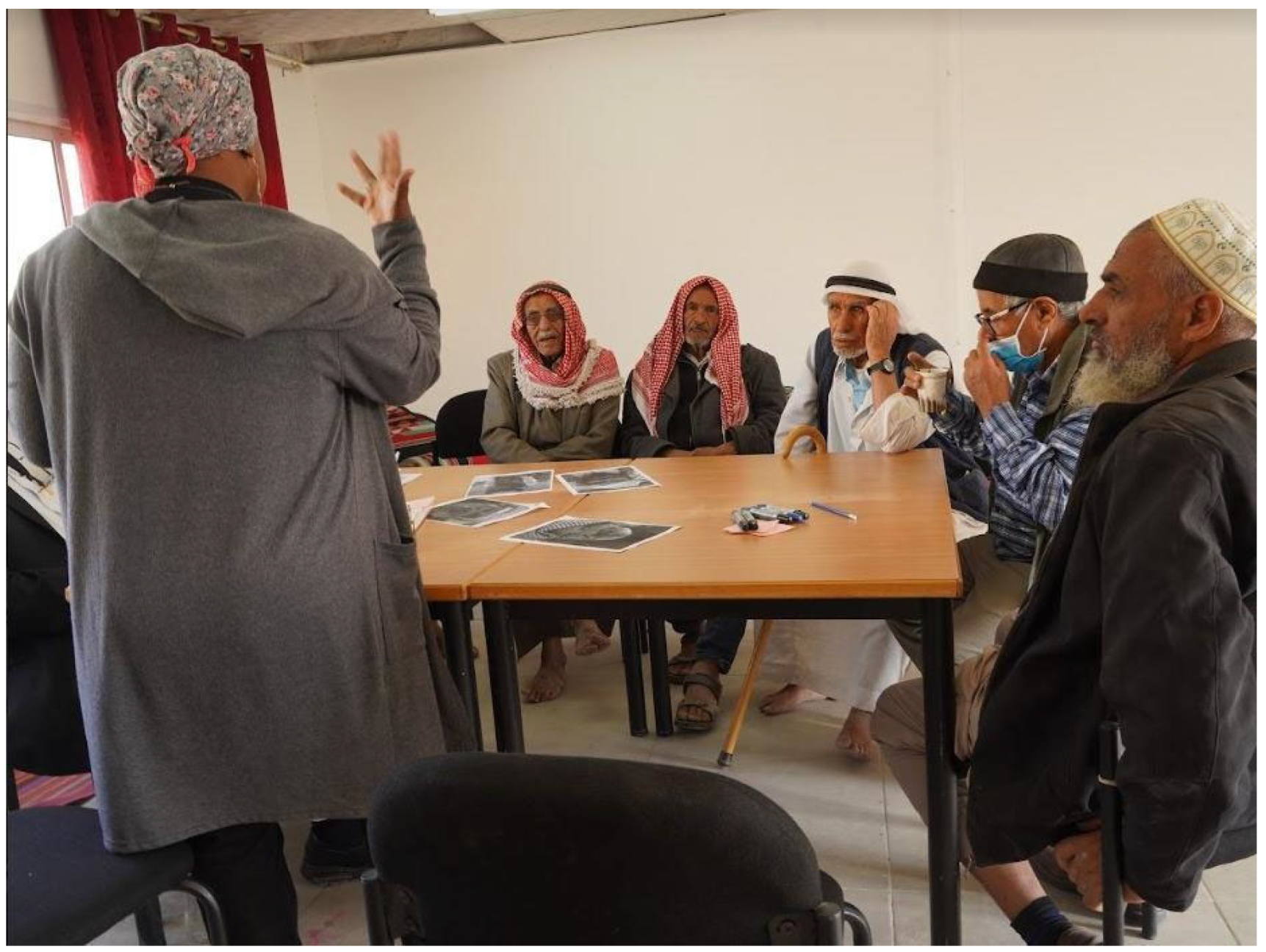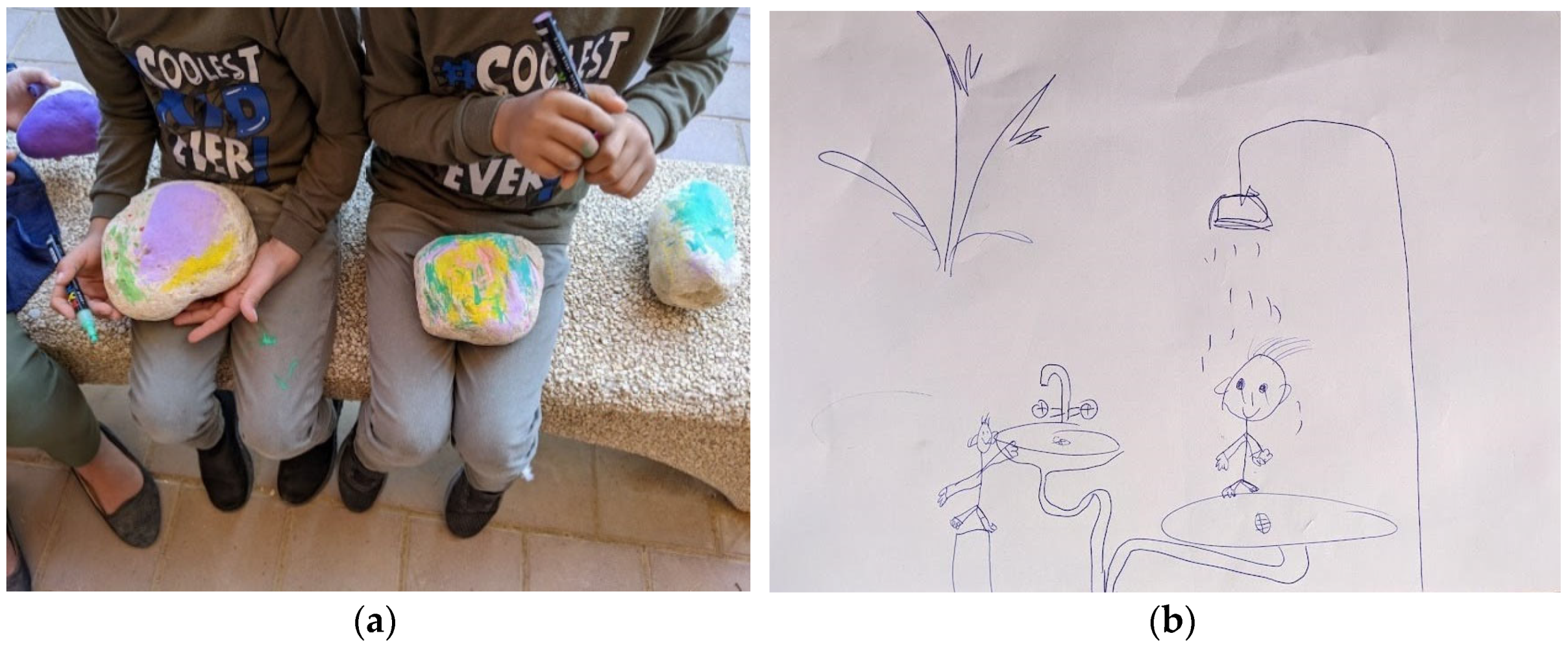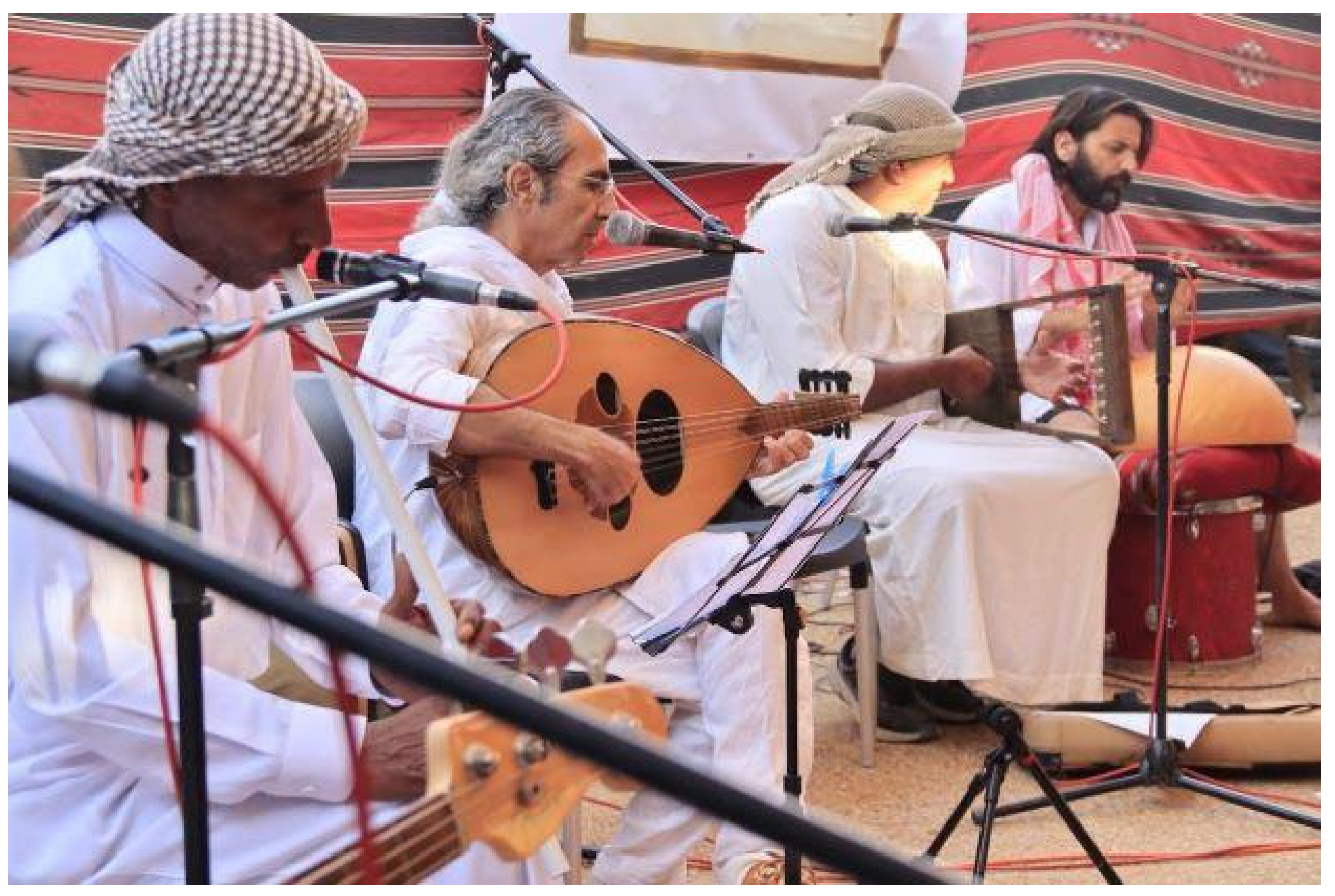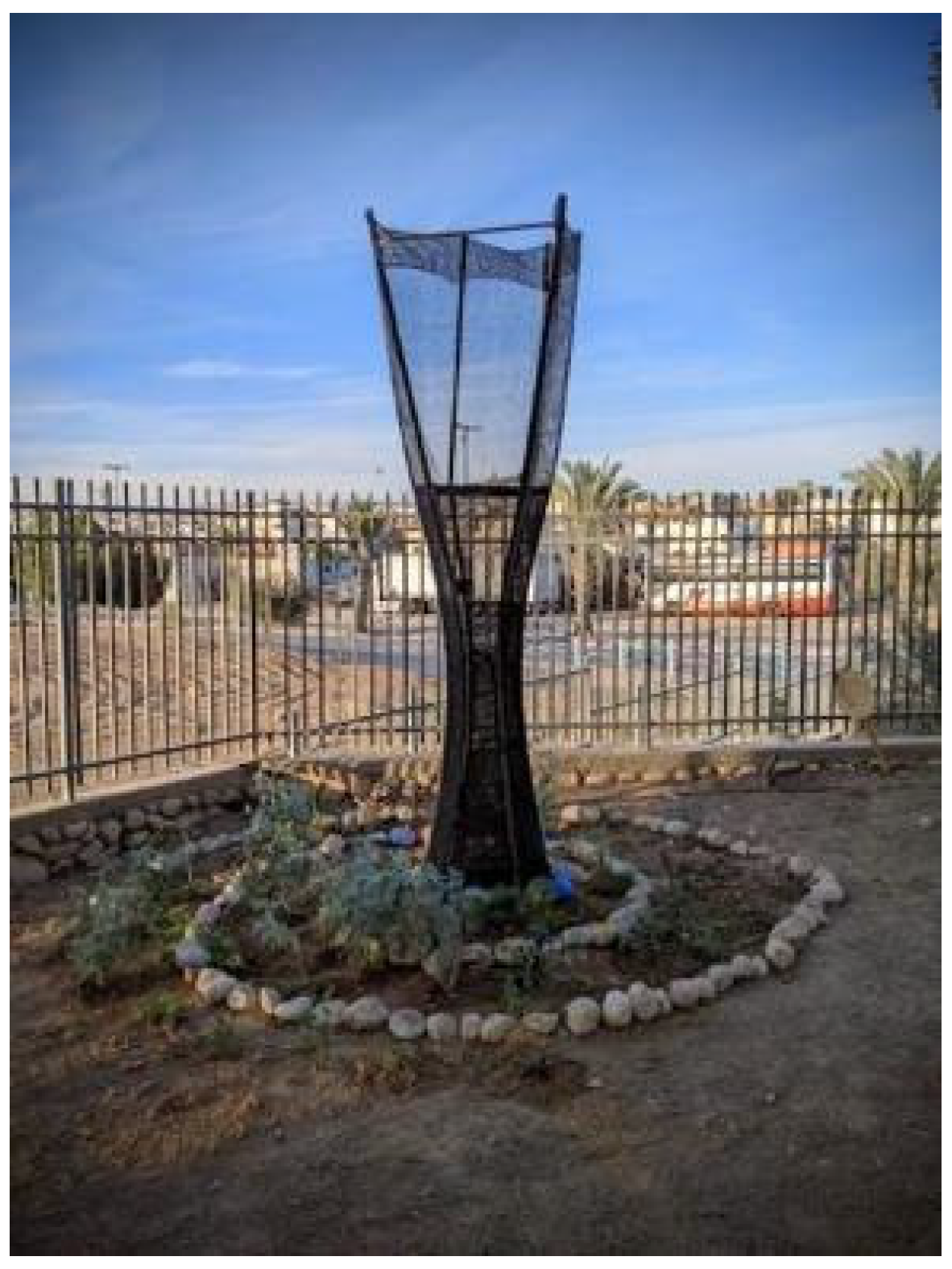1. Introduction
“And today who will linger, who will awaken the dead and heal the fissures? For this mission, we need more than New Historians. For this mission, we need, as always, artists.”
The Common Views art collective, led by artists David Behar Perahia and Dan Farberoff, has been involved since 2019 in an on-going socially engaged durational art project, grounded in interpersonal collaborative relationships with stratified local communities worldwide. Their projects evolve through engaging with inhabitants of various communities at given locations, establishing an active public participation during various stages of the making. Their artistic toolbox contains site-specific, socially engaged art and participatory strategies in collaboration with local creative agents and with the local inhabitants of each of the intervening surroundings. These surroundings, characterized by means of environment, habitation, and social status, serve to inspire consistently novel activities. The place is treated as a tangible site by means of spatial, environmental and planning strategies and as an intangible site, belonging to local communities, their histories, traditions and memories, both individually and collectively.
The artistic strategies are part of the international contemporary genre of socially engaged art and participatory interventions, dealing with the notion of identity from a spatial perspective and touching upon political and civic issues. These practices broaden the artistic toolbox to include a collaborative dimension of social experience outside traditional institutions, to involve forms of engagement with social groups of both art and non-art communities, in the creative process. West Coast scholars distinguish them as an art genre of collectives that through joint continuous site-specific works, propose alternative models for social activity. Dismissal of art as an object, and its progression toward cooperative spatial intervention, release the artistic creative process from individual authorship, steering it to collective production. Artists who adopt strategies of social involvement seek to contribute to society where other social agents have failed, using their unique cultural capital (
Bishop 2006;
Atkins et al. 2008).
Although Common Views adheres to a participatory agenda, their uniqueness lies in an interdisciplinary dialogue revolving around social and environmental concerns. The collective promotes a new concept, Environmental Reconciliation, which juxtaposes the environmental, the civic and the political. They use art engagement as a critical creative tool to reflect on social-ecological systems, the post-anthropocentric idea of the commons, and natural resource equity. Their aim is to drive a public discourse on sustainable resources in the context of climate change and the growing global water crisis which have pushed the need for preserving time-honored approaches and the creative use of resources to the fore.
The environmental aspect of their artistic work is carried out at conflictual sites, interwoven with civic issues of identity, land and the accessibility to resources. Through this discussion they are able to reflect on a distributive imbalance of social and spatial injustice. By reviving ancient local traditions, they seek the reimagination and reconstruction of the inhabitants’ traditional knowledge for contemporary needs. The concept of Environmental Reconciliation offers a creative mode of operation intertwining the past, the local histories, collective memory, and heritage preservation. It aims to use environmentally oriented activity as a civic tool to promote a positive dialogue between contested communities.
The Common Views art collective was formed in 2019 in the course of work within the Israeli desert town of Arad and the adjoining Bedouin settlements. Their mutual activity became the first intervention of an on-going durational nature. The titles given these projects consist of Common Views, the collective name, and the main research themes they are engaged in worldwide. These include the following projects: Common Views: Sourcing Water (November 2019–June 2020); Common Views: Gemeinsame Sichtweisen, Schorfheide-Chorin Biosphere Reserve & Spreewald Biosphere Reserve (November 2020–September 2021); Common Views: Verkörperte Sichtweisen Performance, Grumsin forest UNESCO world heritage site 10th anniversary, Schorfheide-Chorin Biosphere Reserve (June 2021); Common Views: Tent of Assembly, Kumzits Art Festival, JCF, the old Jewish quarter of Kazimiers, Krakow, Poland (June 2021); Common Views: ARCHA, Spreewald, Germany (May–September 2021); Common Views: The Water Way, Kuseife, Israel, (November 2021); Common Views: A Cup of Water for the Messiah, Open House Festival, Abu-Tor, Jerusalem, Israel (November 2021); Common Views: Presentation, in the Commoning Curatorial & Artistic Education CAMP Notes on Education Summer School, DOCUMENTA fifteen, Kassel, Germany (June 2022); Common Views: Biosphäre Berlin | Berlin Biosphere, Germany (September 2022–February 2023).
Dr. David Behar Perahia is a French-born Israeli academic researcher and artist situated in Italy and Israel. His research, based on various fields of practice such as geology, material chemistry and architecture, propelled him to a site-specific approach. Through research-based art interventions, he aims to explore the layers that compose a local context, and to establish a strong sense of place in order to convey a new perspective on locality. He employs the use of mixed media, exploiting materials found locally, and inspired by his encounters with the locale, and his works are exhibited worldwide. Dan Farberoff is a multinational, interdisciplinary multimedia artist, director and filmmaker based in Berlin. He is a movement practitioner, at times involved with teaching Yoga and meditation as well. His work is primarily focused on mediated physical and digital presence in nature and urban site-specific environments. He incorporates new media, video, photography, interactive technology, live presence, and dance in his works on various multidisciplinary projects, events, festivals and shows worldwide. Some of these are large-scale works, presented before large audiences at major venues.
The article pinpoints strategies used by
Common Views art collective in the “Negev” desert region of southern Israel through a collaboration with the local commons that inhabit this region, the Bedouin community, and the Jewish community. While sharing a common desert vista, these are diverse, multicultural communities which suffer inequity in access to valuable resources. (
Figure 1).
The article examines the
Common Views project through two art interventions performed in the same desert environment and located in close proximity. The first—
Common Views: Sourcing Water (2019–2020)—took place in the Bedouin settlements of Al Baqi’a valley and the adjacent Jewish town of Arad. The second—
Common Views: The Water Way (2021)—took place in the Bedouin town of Kuseife (
Figure 2). Both interventions reflect a conflictual area, both take place in the desert, and both pertain to the theme of water. The first is a long-term project which involves a Jewish city and unrecognized Bedouin settlements, and deals with the collaborative reconstruction of water cisterns, while the second involves a Bedouin city, its elders, schoolchildren, and various environmental and educational agencies, and deals with water harvesting. The second operation is in part, an extension of the first, despite the several-months-long gap, during which a sculptural product from the first intervention was applied to create another new sculpture, in the second intervention.
2The artists have chosen to focus on water as the most precious resource in the desert region, to reflect on a distributive imbalance between Jewish and Bedouin inhabitants regarding water use and supply. Traditions of the desert practiced by the Bedouin who live there today have been practiced in the past not only by the Bedouin desert dwellers, but by the ancient Hebrews who were desert dwellers themselves. In fact, all inhabitants of the desert used these methods, which the artists are working to revive. They collaborated with local commons and their representatives to revitalize and awaken an interest in the local heritage of the desert tradition of rainwater harvesting, and to enact sustainable practices as a mutually fertile ground for both communities. These actions serve to trigger conversation and public discourse, to provide a possible sustainable future for this desert habitation, and to suggest a solution for future collaboration on mutual grounds.
Within my conceptual framework, I explore the Common Views interventions in the Israeli desert region as a case study of socially engaged artists working as environmental citizenship practitioners using reenactment strategies based on histories and local traditions to promote sustainability. I focus particularly on the agenda of preservation and reenactment of local heritage and histories to strengthen identity in the repressed community, as well as on the application of practical sustainable tools. These artistic strategies in essence reenact historical traditions, allowing participants to reimagine the vernacular practices of smart use of water in a desert environment that were used in the past but are no longer in use today. Reviving and restoring past customs, traditions and practices that were part of desert life, mainly through the reuse of water, creates a platform for the local participants to renegotiate their self-determination and local identity in regard to place.
Since this is a binary space of Jews and Bedouins, the new future identity that can be built, in long-term, will be a complex, layered and hybrid identity, which is characteristic of the Bedouin minority’s spatiality as the setting, and the politicization of natural resources in Israel as a site-in-conflict. I explore the artists’ actions, which are driven by dialogue promoting the advancement of solidarity and cooperation of a community within its space and catapulting them into the role of environmental citizenship practitioners. Inspired by the Situated Solidarities and the Cultural Action approaches, the artists’ strategy is based on dialogue, focused on listening, performing a reflection of cyclical learning, establishing trust and forging solidarity, simultaneously inviting exploration. These actions serve as catalysts for potential transformation and are aimed at engendering a sense of mutual responsibility and of empathy with the “other” and with the environment (
Routledge and Derickson 2015;
Freire 2000) (
Figure 3). As part of the socially engaged art practices implemented at a site-in-conflict, they continuously mediate and create mutually fertile grounds for contested communities or groups, acting as civic practitioners. I explore these modes of art operation as they juxtapose the environmental and the political, offering an alternative mode of sustainable heritage preservation by means of contemporary art. I argue that the collective agenda widens contemporary art discourse on collectives and their role as environmental citizenship entrepreneurs.
Moreover, a reflexive ethnographic stance, in which the process has developed throughout the research process, acknowledges my position as an art curator and academic researcher, who has been engaged in both projects as a creative agent and participant. In the first intervention—Common Views: Sourcing Water (Al Baqi’a valley and Arad) I was an active participant in all stages of the intervention. One of my major contributions was in the dialogue with women participants and I curated the exhibition project. In the second intervention—Common Views: The Water Way (Kuseife) I served as conceptual reflector and was involved in the ongoing discussions with artists prior to and throughout the project. My close involvement in the projects, and the personal acquaintances I established with the participants, the various agencies, and the stakeholders, afforded me the opportunity to accompany all stages of the project including collection of materials in the preliminary research, and formation of participatory actions. Collection of materials and documentation was done with critical insight into future research. This unique position reflects my methodology in regard to locating information provided in this article.
In this manner, I overcame the obstacle created by the critical reading of Hal Foster on the ethnographic role played by artists in their modes of intervention in communities and the danger of presenting pseudo-documentary materials, thus creating a one-sided narrative (
Foster 1996). My writing can be regarded as reflexive writing, done after a period of time that allowed questioning, observation and review of the events that took place within the historiographic and theoretical context. The art collective sought my involvement due to my research specialization in the disciplines which characterize these areas of research, and include practices of contemporary art, heritage preservation and the Israeli-Palestinian sites-in-conflict (
Carmon Popper 2019).
The article seeks to utilize the interdisciplinary experience to interlace socially engaged art and environmental citizenship in Israeli art today, using Common Views intervention in Israel as an example. Therefore, I will discuss the theoretical and conceptual framework of the participatory turn, as it interlaces with artistic and civic practices. I will review theories related to collaborative art, communal and socially engaged practices, as well as the participatory art evolution which intersect with the social and the communal. Then, I will discuss the historiographic framework by means of the research context on the Israel-Palestinian conflict, focusing the research on the Bedouin minority in Israel. Based on the meeting between the two frameworks, I will explore the Common Views art collective engagement at two interventions in the “Negev” desert, which took place successively. Each one is a site-specific intervention, but differs, as I will show, in particular characteristics and emphasis, yet both are wrapped under one umbrella, as part of a long-term durational art project worldwide.
4. Common Views Art Interventions
The art collective acquainted themselves with the living conditions of the Bedouin in the valley, their political-civic situation and the condition of illegality, the communities, and their association with their environmental and natural resources. Under their leading concept of Environmental Reconciliation, the art collective treats these issues by referring to water as the desert inhabitants’ most precious and essential natural resource.
The major theme regarding water which was implemented in the art project
Common Views: Sourcing Water was rainwater harvesting, reflecting on its imbalanced distribution between the Al Baqi’a settlements and the city of Arad. By referring to the tradition of rainwater harvesting and other related environmentally sustainable Bedouin practices, the collective employed native knowledge to advance an overall vision for sustainable desert habitation—linking past and future, tradition and transformation—and offering an additional entry point for local engagement (
Behar Perahia and Farberoff 2022).
The Common Views: Sourcing Water project consisted of a set of actions (“steps”) to promote the preservation of the old Bir Umm al Atin water cistern, as one of a large group of old cisterns which exist in the area. The artists’ vision was to create a future walking trail—“The Cisterns Trail”—between major preserved cisterns, for the daily use of the Bedouins for tourism purposes. The Cisterns, which until only a few decades ago served as their principal water source, are nowadays neglected and unused. The trail seeks to form a link between the Jewish and Bedouin settlements—traditional and modern communities sharing a common landscape. The vision of reconciliation is implemented by the artists in various creative, socially engaged activities, to raise awareness of the control and distribution of the resource of water between Jewish and Bedouin settlements and by negotiating in favor of cooperative actions to revive traditional methods of water preservation. The vision aims to promote a practical solution to the spatial complexity of the Bedouin minority in terms of property rights and territory.
The second art intervention Common Views: The Water Way at Kuseife combined the theme of water with the theme of the desert ways to reflect on the substantial knowledge and practical tools inspired by the oral history of the elders, and their conversion for current needs. The essentially linked themes of water and way serve as a bridging tool for the artists to mediate the relationship between local communities and their desert environment, and sustainability in a broader context.
It took on the shape of a performative event in the form of the “Art and Ecology Festival,” held at the Bedouin town of Kuseife. The festival, first of its kind, was based on the topics of sustainability, environment, and desert culture, and held various activities presenting the desert heritage from the perspectives of water saving and desert roads through musical performances, folk tales, storytelling, tours, sustainable agriculture workshops and creative workshops of poetry, drawing and craft. The merging themes of water sources and desert ways emphasize their central cultural axis in desert habitation heritage. The reawakening and reimagination of traditional environmental tools and the operations of the elders, highlight the essential role played by the relationship between man and nature in the Bedouin desert culture, and promote its propagation with the younger generations, as well as between contested tribes of the urban limited space, as a source of inspiration to be used nowadays in favor of environment and reconciliation.
4.1. Common Views: Sourcing Water
The “unrecognized” settlements of Al-Baqi’a originated by the
Khamisa and
Khawamasha families of the
Genbiv tribe and a family from the
Abu Jawid tribe, members of the Dulam headquarters, who were transferred to the Al Baqi’a valley. Since then, they are spread in residential complexes of small families based on a male ancestor and his descendants, isolated in a large scattering from each other. They own herds of sheep, camels, donkeys, and horses, but are also employed in state institutions, academies, and local leisure sites. As their habitus is uncertain and temporary, their living conditions are harsh, with inadequate transportation infrastructure such as unpaved roads, the absence of basic facilities such as water and power supply, and cellular reception. It’s interesting to note, that despite the harsh living conditions, most of the elders wish to stay and become villages with agricultural tourist characteristics and are struggling to obtain State recognition and permanent housing permits (
Kahana and Hanegbi 2015).
As a central aspect of the project, the artists initiated special actions to revive existing cisterns in the area, with the participation of local inhabitants and participants from further afield, employing site-specific, and community-engaged, participatory practices to touch upon the native desert tradition of water harvesting and the current distributive inequity.
The site chosen for the first act was Bir Umm al Atin cistern, located close to the Hamai’sa family’s unrecognized settlement. The cistern, dated likely to the Late Ottoman period, includes a settling pond at its entrance and canals to which surface runoff flows along the mountainous topography (
Markus 1984). Nowadays, since the cistern has not been used for years, it has lost its original ability to store water for both human and animal use. Its interior was filled with alluvial soil and the water-carrying canals have been eroded, preventing the accumulation of water in the short wintertime (
Figure 7). Although the Bir Umm al Atin cistern is located within the projected territory of the Bedouin family, its location is also within the projected territories of governmental, urban and military agencies such as the Israel Antiquities Authority, the Arad municipality and the regional Environmental Agency. This complex contention for ownership is reflected at all levels, with competing authorities seeking to impose control over the land and its natural resources, in which the artists were required to negotiate the power dynamics, ownership relationships and enclosure gestures.
The Bir Umm al Atin cistern served as the site for a series of mediating actions which included an introductory tour, an action to renew the rainwater harvesting channels leading to the cistern, an action to renew the cistern sedimentation pool, and finally, a performance at the site. These actions served as points of mediation for the wider Bedouin community and for the Jewish community from the nearby town and further afield. This resulted in a continuous conversation among them, which engendered solidarity, and thus formed a for-purpose community. This successful bringing together of Bedouin and Jewish children, of religious nationalists with liberals, the disenfranchised, independent women, and conservative patriarchs, to work together and collaborate meaningfully, should not be underestimated considering the region’s entrenched divisions. The cistern served as a common ground, bringing together the different interests of those with a love of nature, of “The Land”, of history, of archeology, of ecology, of culture and of tradition, while aligning their various needs with those of the environment (
Behar Perahia and Farberoff 2022).
As a long-duration art project, it consists of several levels (steps) on a chronological timeline. The first essential step is to form ideas in a theoretical manner that will underlie the art vision and the modes of action, based on a process of historical and archival research for visual and textual documentation in formal and informal local agencies. Another step is to reach out to active agents such as officials, activists, community leaders, educators, and researchers, some of whom are already engaged and can offer insight into the relevant local issues. As part of this initial preliminary site-research, a fertile dialogue was conducted with Bedouin community leaders in the valley, who drive the struggle against their uncertain existential situation, with their settlements constantly under the threat of eviction. On behalf of the art practice, the focus of negotiation was on listening, establishing trust, forging solidarity that invites mutual exploration and leads to an agent network, which expands into an intricate web, encompassing various individuals and organizations, some of which are controversial.
The first operation at the site (December 2019) was an open public call dedicated to cleaning and excavating the channels for runoff water to accumulate in the cistern, based on volunteers of various ages and diverse interests from both the Jewish and Bedouin communities using excavation tools such as hoes and buckets, while working side by side for the sake of the common vision of reusing the site (
Figure 8). The second public operation (February 2020) was dedicated to a comprehensive cleaning of the cistern by Bedouin schoolchildren, in collaboration with archeologists and representatives from the Israel Antiquities Authority (IAA), under their community-educational practice of “adopting a site”, as part of an environmental studies program. The final goal of preparing the cistern for functional use was not achieved due to disagreements between the archaeologists and the Bedouins concerning suitable modes of intervention such as the use of modern mechanical instruments. Representatives of the Bedouin community aspired to significant intervention at the site in favor of its establishment as an active cistern that would collect runoff water during the winter. The IAA insisted on manual excavation. This created a state of action that was more symbolic of an open dialogue and study of local traditions and desert life, rather than a dynamic act of change in the site’s status (
Figure 9). Thus, the art intervention explored aspects of the site which concern access, control, agency, and authorship, and engaged the ideas of the Commons and environment as they go hand in hand with empowering individuals in the repressed community by promoting a sense of ownership and custodianship.
Future action based on artist visions to revitalize and reawaken the native tradition of rainwater harvesting, proposes the creation of a cistern trail linking the town of Arad with the settlements in the Al Baqi’a valley and running through a number of existing cisterns along the way (
Carmon Popper 2019). The marking of the water cistern trail is designed to present a tour of the public desert space and to initiate through it, a process of mutual sharing between urban and scenic communities, and Jewish and Bedouin ethnicity.
The vision has vastly expanded from a dormant proposal by local activists for a biosphere reserve that would balance the needs of the Bedouin and the desert environment at Al Baqi’a, to encompass the entire region surrounding the town of Arad, including its urban center, settlements, and nature reserves (
Golan et al. 2017). This conceptual, regional plan for a social-ecological commons that brings the needs of all inhabitants and lifeforms into consideration, was developed by the collective throughout 2021, in the area of biosphere reserves of Schorfheide-Chorin and Spreewald in the state of Brandenburg in Germany. In this context, models of sustainability, such as UNESCO’s Man & Biosphere program’s biosphere reserve model, Deep Ecology philosophy, and other models that present global solutions to local challenges were reviewed.
All actions which have been carried out, and those that are planned were presented in the form of an art exhibition in the Arad Center for Contemporary Art (ACAC). The raw materials, documentation and the artist experiences, participatory actions, and working collaborative processes were transformed and translated by the artists into site-specific, formalistic structures, parts of which extend out of the gallery building into the public domain, serving as a spatial experience (
Figure 10). The series of artworks included sculpture, video and sound installations, drawings, and photographic works which touch upon living conditions in the “unrecognized” settlement population and mediated issues of land ownership, control and distribution of resources, inequity, and exploitation.
From a curatorial, conceptual, and practical process, recognizing the need to distinguish between the artworks and the archival raw materials and future vision in the exhibition space, an inner intimate space was defined at the heart of the gallery space, as an integral part of this exhibition. It was perceived as the “dreaming room” into which the audience was invited to sit, view the documentation, and review professional literature about socially engaged art history and theory to further investigate the “Negev” desert environment, the notion of Biosphere reserve and its optional implementation in the area. Strategically placed nylon maps of the area afforded the public an opportunity to mark the route they thought appropriate for the cistern trail (
Figure 11).
To demonstrate the current Bedouin challenges of water sourcing, a network of water tanks and black pipes, scavenged in the desert, was set up as the main visual symbolic art intervention in the gallery space, spilling out into the street below. This was accompanied by a series of sculptures of a
Rujum—the desert way marker traditionally made of piled-up stones, as a practical and symbolic object which became a minimalist sculpture, in the form of a pyramid-shaped metal grid draped in colorful knitted surfaces, created by the women of Arad and the nearby Bedouin settlements. The participatory knitting action was based on a series of colored palettes conceived by the art collective, matching the different countries of origin of the various women, and selected by personal preference according to their traditional cultural style (
Figure 12).
The first landmark on which a Rujum will be erected will be a convergence of the Desert Threshold Promenade—a future promenade circumducting the perimeter of the city of Arad, emanating from a collaboration between the art collective and the Promenade Planning Team, as part of a public participant planning in which the diverse human landscape of Arad and the Bedouin communities take part. The act of placement stems from a direct affinity between the body and space that will be expressed in a ceremonial action on site. The meaning of human presence is exposed to political and cultural coverage and is directly linked to nature and the essential connection between the desert environment and the water cycle that passes through it. The act of erecting the first Rujum will be the beginning of an annual ritual of renewing and “draping” the Rujum cyclically each year. This will be followed by future operations at the other cisterns along the trail.
4.2. Common Views: The Water Way
The art intervention Common Views: The Water Way in the Bedouin town of Kuseife focuses on two concept simulations, the concept of water and the concept of way in the sense of desert way. The combination of water and way represents the most essential signs for survival in the desert in general, and particularly in the culture of desert life.
Bedouin heritage cherishes the intersection between water and way. Major importance is attributed not only to the site of the water source as a meeting place, but to the water carriers (Waradath) and to the sacred way (Tariq’), which must not be harmed or blocked, and which ensures safe passage. The road may not be an equally open space despite being apparently a public space. Indeed, a road may be a space of exclusion. As a place, a road is thus subject to complex political and economic influences that may facilitate cultural and social encounters, but might also generate conflict and friction. The location of the town of Kuseife indicates a junction of ancient desert roads which connect major cisterns and wells that were the main water sources in the area. These kinds of desert ways are cultural axes in Bedouin tradition. Today, in the face of climate change and increasing desertification, addressing the topics of water and the ways in the desert, enables us to reflect on principles of conservation of natural resources and on human-environment relations also as a means for bringing the communities in the region closer through sustainable tools.
The town of Kuseife was established in 1982, 10 km west of Arad, as part of a wider plan of the State for the settling of the “Negev” Bedouins in 7 new Bedouin towns (Rahat, Hura, Negev Ara’ra, Tel-Sheva, Segev Shalom, Lakia and Kuseife). It was announced in 1996 as a local council in which all residents are Bedouins. Kuseife’s population includes 70% Bedouins originally from Rafiah and El-Arish, who for generations were serving the local Bedouins in various agricultural works and therefore called “Falahs” (farmers in Arabic). The other 30% see themselves as indigenous Bedouin and the original owners of the land. The town serves all residents including those of unrecognized settlements in its vicinity. It numbers 20,000 people, half of whom are under the age of twenty-one, and boasts various schools in town. For many years the mayor belonged to the Abu Rabia family, but in recent years, the mayor belongs to the larger and stronger Abu Ajaj family. The families harbor deep territorial disputes over their lands, which also cover public spaces, including educational spaces.
The project was initiated and carried out by the collective in a team effort with Saad Abu Ghanam, a local Bedouin poet and Kuseife resident. Together, they set up a creative team to negotiate the anticipated art intervention in regard to content, operation and location, with town leaders and residents, as well as with state officials, Bedouin and Jew alike, such as Ali Abu Ajaj, the Bedouin Urban Community Center Director.
Ongoing negotiations with various agencies revealed the local complexities of urban life, which required consideration and adherence to the accepted common social rules; local political rivalry, clan-affiliation, as well as the rapid change that Bedouin society is going through, and the discriminatory status of women which is evident in Bedouin society. Results of the preliminary research led the team of artists to choose groups of local women and schoolchildren to serve as agents of transformation, with the help of local creative educators and female Bedouin environmental agencies who served as mediators to unravel the intricacies of the special delicate and competitive nature of the relationships in the town. In addition, a group of community elders, serving as storytellers, became the markers of the Bedouin desert tradition, which connects the past with the future. This strategy relied on indigenous knowledge and collective memory to advance a vision for communalism and shared interests. In this context, the theme of the “way” as a traditionally neutral territory which allowed the bridging of divisions, became pivotal.
7Using the traditional ways and notions, the collective relates to the local tradition and illuminates shared values that connect all inhabitants in their relationship to the place, so as to overcome the territorial and internal tribal struggles characterizing their town. However, this mode of action seeks to touch upon current relevant issues of sustainability facing the populace due to climate change. The goals of the project are to exhibit solidarity with the various populations in the area, between groups that are usually separated on the basis of tribe, gender, or age, in favor of intergenerational exchange within the urban community. The affinity was the mutual occupation with desert nature and heritage, which was explored as part of a wider actual phenomenon, in order to increase awareness of environmental issues, the smart use and reuse of natural resources in light of increasing climate change and the global water crisis. The experiences, the actual tools and the expressions of thought and awareness were presented as universal challenges to all residents who share a common landscape.
The urban space chosen for the event was the local school complex. Its proximity was suitable not only as a neutral space lacking any territorial or family dispute, but also marked the cooperation of leaders of the urban establishment in general, and particularly, the educational establishment, with the artists, as encouragement for the residents to participate. The project, initiated and prepared by the artists in collaboration with the local community, included a variety of creative activities adapted to education for sustainability, and working with groups of schoolchildren, women, and the city elders. These activities spanned a period of one month and culminated in a festive ceremonial event to mark its completion.
The festival included a large Bedouin tent which was used, in accordance with the local traditional hospitality tent, as a communal gathering place. The tent served as a mediating factor for generating participatory, egalitarian, multi-generational discourse, and as a gallery space wherein the creative products crafted during the festival were presented and music was played. It offered a neutral location where all members of the community could gather regardless of clan affiliation. The large tent, based on the use of vernacular language and familiar materials, was used also as a hosting venue where outsiders, namely members of the Jewish community could be received (
Figure 13).
The “Desert Sustainability and Art” festival took the form of a two-day event celebrating water conservation and traditional Bedouin agriculture. Activities were based on creativity and sustainability, and aimed to expose and experience various means of smart utilization for saving, conserving, and preserving water, inspired by the past and traditional local knowledge, and adapted to the present, in keeping with a critical environmental and climatic perspective. The overall vision for a biosphere reserve in the area was, however, excluded to simplify the process.
The festival was open to the public, Bedouin and Jew alike, and offered various activities such as creative workshops, tours and experiments, while addressing a wide variety of audiences including women, children, and adults, all guided by the artist team and their collaborators. The activities included environmental education workshops which taught the practical tools of traditional desert agriculture used for conserving water; creative writing workshops, painting and drawing workshops, storytelling workshops, tours and walks to learn about water heritage in the area and the ancient waterways.
The ‘Desert Water’ and ‘Desert Agriculture’ workshops conformed to the principle of reviving history and connecting tradition with contemporary time. Mediated by environmental educators of the Institute for Education and Sustainability, who compared traditional solutions for the water-scarce environment with contemporary sustainable solutions for storage, conservation, and reuse of rainwater. Irrigation of crops and vegetables under desert conditions, water-scarcity, soil types, organic fertilization and irrigation were also examined through contemporary tools, to provide an answer for floods and productive agriculture (
Figure 14).
Storyteller workshops ensued, with stories of desert life told by the elders of Kuseife, as well as Bedouin folk. All stories revolved around the relationship with their environment—water sources, the ways of the desert and nomadism (
Figure 15). Creative writing workshops with school children produced original poetry on the topic of water and the ways of the desert (
Figure 16). The festival concluded with a Bedouin music stage show with participation of the world-renowned Israeli musician Yair Dalal, and in collaboration with the Sharji Ensemble—the first Jewish-Bedouin ensemble which performs traditional and modern Bedouin music (
Figure 17).
The artists used one of the
Rujum series as a ready-made object which was re-treated and transformed from a way marker to a rainwater harvesting tool. As a socially engaged project, it was conceived as a common activity in collaboration with local residents and visitors to create an ecological sculpture with the practical function of collecting rainwater following the ancient tradition of rainwater harvesting in the area. Unlike the entire festival, which was a temporary event, the sculpture lives on at the site since the festival, necessitating continuous maintenance by local residents (
Figure 18).
5. Conclusions
The two art interventions by Common Views art collective in the Israeli “Negev” desert—Sourcing Water (Al Baqi’a Valley and Arad) and The Water Way (Kuseife)—set a model to the genre of collaborative and socially engaged art at a site-in-conflict. They take part in a wider global art phenomenon, converging the artistic with the social and the communal as presented at the Documenta fifteen in Kassel (June-September 2022) which was dedicated to the topic. I argue that Common Views strategies challenge the conventional genealogy of the genre as they call for action while seeking to intertwine the civic and political with the environmental. Acting under the complex circumstances of the Israeli-Palestinian conflict, their art actions rise from a critical aspect on the spatial injustice and civic inequality between Bedouin and Jewish communities sharing the same desert vista.
Both art interventions are performed in the same desert environment and located in close proximity to each other. Moreover, both pertain to the theme of water and reflect a conflictual Israeli area. The first, a long-term project which involves a Jewish city and unrecognized Bedouin settlements, deals with collaborative reconstruction of cisterns, while the second involves a Bedouin city and its various environmental and educational agencies, and deals with water harvesting in a festive event. In this sense, they contribute an interesting perspective to the discussion of the relational aesthetic theory of Bourriaud and Bishop on micro-communities and socially engaged acts. Micro-communities are small and hyper-small-scale communities engaged in mutual interests and concerns revolving around everyday human involvements in concentrated areas. They are defined in regard to a specific place and time and therefore are synonymous with the identity of a place. Micro-communities uncover activities that are not evident in traditional public policy, and local politics and micro-politics revolve around them as they represent a paradigm shift in the ways that local authorities treat fluid and shifting urban areas (
Virani 2007).
The notion of micro-community relates to micro-utopia or hands-on utopia—one of the key concepts used by Bourriaud—which renounces social change through conflict, yet does not maintain the same utopian aspirations as the 20th century avant garde. He argues that utopia nowadays operates at a micro-level and has given way to everyday micro-utopias, which are incorporated into the daily construct of social life. Hence, the role of artworks is no longer to form utopian realities, but to actually become a way of life and a model of action within the existing realm (
Bourriaud 1998). Bishop criticizes the artwork as a producer of micro-community in bringing together people with a shared interest in a specific place, and especially points to an exhibition space as a privileged place where micro-communities, or instant communities as she coined them, can be established to generate a particular ‘domain of exchanges’ (
Bishop 2006). She argues that the exhibition serves the artist as a place for utopian transgression using the tools of art within the institutional framework of the art world. The relational artist is confronted with a strongly ambiguous situation, given that he himself is the beneficiary of that system which he desires to set in opposition to his own micro-utopias (
Bishop 2004;
Horváth 2016).
Common Views art intervention discussed in the article might be considered under the definition of ‘domain of exchanges’, as they are judged on the basis of aesthetic criteria and therefore fit the definition of micro-communities. On the other hand, within the conflictual interstice of Isarel/Palestine, the artists take responsibility for the symbolic models of their art, as all representations refer to values that can be transposed into society and inserted into the social-ethnic fabric rather than taking inspiration from it.
Moreover, as we presently face the growing threat of climate change and a global water crisis, their actions seek to integrate with the urgent need for preserving time-honored approaches and the creative use of resources. In this manner, they are using their artistic toolbox to activate collaborative processes of environmental citizenship. This kind of action is linked to a paradigm shift from protest as a “raison d’être” toward the active proposal of an alternative and creative solution, both civic and sustainable. The artists propose using smart traditional methods of storing water, especially in desert environments, including conservation of ancient water sources such as existing old cisterns that have been inactive, and to reenact traditional agrarian methods of rainwater harvesting.
The reenactment of local traditions, practices and tools regarding smart and sustainable use of water typical to desert environments, are based on the reimagining of the past ways by the elders of the local communities. Their histories and collective memories were raised by the artists to public discourse and translated into communal public activities representing their traditional knowledge and heritage and applying them in practice. The variegated communities and group participants—children and adults, men and women, Jews and Bedouins, religious and secular, lead to new junctions between people to promote a shared, sustainable goal that reflects a civic tone. The goal is triggered by the ambition to attain a sustainable future for the region’s desert habitation using traditional ancestral strategies in an active, collaborative way.
The interventions that are yet to come, as part of the durational art project, will continue with the same model of action that interlaces the social-ecological challenges of resource-sharing and the disadvantaged relationship between minority communities and the governmental apparatus—participatory art in the form of environmental citizenship.
